SC-560
Synonym(s):5-(4-Chlorophenyl)-1-(4-methoxyphenyl)-3-trifluoromethyl pyrazole;5-(4-Chlorophenyl)-1-(4-methoxyphenyl)-3-trifluoromethylpyrazole;SC-560 - CAS 188817-13-2 - Calbiochem
- CAS NO.:188817-13-2
- Empirical Formula: C17H12ClF3N2O
- Molecular Weight: 352.74
- MDL number: MFCD02179214
- SAFETY DATA SHEET (SDS)
- Update Date: 2024-11-19 20:33:22
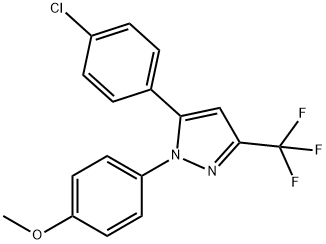
What is SC-560?
The Uses of SC-560
SC-560 has been used as a cyclooxygenase-1 (COX-1) inhibitor to study its effects on prostaglandin E-2 (PGE2) signaling in ciliogenesis in zebrafish embryos. It has also been used as a selective inhibitor of COX-1 to study its role in PM10-induced endothelial dysfunction.
The Uses of SC-560
5-(4-Chlorophenyl)-1-(4-methoxyphenyl)-3-(trifluoromethyl)-1H-pyrazole is used as a cyclooxygenase inhibitors on the angiogenesis and apoptosis.
What are the applications of Application
SC 560 is a highly potent and selective inhibitor of Cox-1
Definition
ChEBI: A member of the class of pyrazoles that is 1H-pyrazole which is substituted at positions 1, 3 and 5 by 4-methoxyphenyl, trifluoromethyl and 4-chlorophenyl groups, respectively. Unlike many members of the diaryl heterocycle class of cyclo xygenase (COX) inhibitors, SC-560 is selective for COX-1.
Biological Activity
Highly selective cyclooxygenase-1 (COX-1) inhibitor (IC 50 values are 0.009 and 6.3 μ M for COX-1 and COX-2 respectively). Inhibits COX-1-derived platelet thromboxane B 2 , gastric PGE 2 and dermal PDE 2 production. Significantly reduces ovarian surface epithelial tumor growth in vivo . Orally active.
Biochem/physiol Actions
SC-560 (5-(4-chlorophenyl)-1-(4-methoxyphenyl)-3-(trifluoromethyl)-1H-pyrazole) is a non-steroidal anti-inflammatory drug (NSAID). It is a lipophilic, diaryl heterocyclic compound. SC-560 acts as an effective antiviral agent against hepatitis C virus (HCV). It also has a potential to hinder prostaglandin E2 synthesis in neurons at nanomolar concentrations.
in vitro
preincubation of cox-1 with sc-560 inhibited the conversion of arachidonic acid to pge2 in a concentration-dependent manner [1]. sc-560 was necessary to sustain a reduced basal level of pgi2 for an extended period. sc-560 inhibits cell proliferation and accelerates apoptosis which results in attenuated tumor growth [2].
in vivo
oral dosing with either 10 or 30 mg/kg sc-560 1 hr before assay completely inhibited cox-1-derived platelet thromboxane b2, gastric pge2, and dermal pge2 production [1]. sc-560 can suppress ovarian surface epithelial tumor growth. tumor growth was suppressed in allografted mice treated with sc-560 for a longer period, but the reduction in tumor growth was less dramatic than the short-term treated [2].
storage
Store at +4°C
References
[1] daikoku t, wang d, tranguch s, morrow jd, orsulic s, dubois rn, dey sk. cyclooxygenase-1 is a potential target for prevention and treatment of ovarian epithelial cancer. cancer res. 2005 may 1;65(9):3735-44.
[2] christopher j. smith, yan zhang, carol m. koboldt, jerry muhammad, ben s. zweifel, alex shaffer, john j. talley, jaime l. masferrer, karen seibert, peter c. isakson. pharmacological analysis of cyclooxygenase-1 in inflammation. proc natl acad sci u s a. 1998 oct 27; 95(22): 13313–13318.
Properties of SC-560
| Melting point: | 63 °C |
| Boiling point: | 440.6±45.0 °C(Predicted) |
| Density | 1.33 |
| storage temp. | 2-8°C |
| solubility | DMSO: >20mg/mL |
| form | Off-white solid |
| pka | -3?+-.0.10(Predicted) |
| color | White to Light yellow to Light orange |
Safety information for SC-560
Computed Descriptors for SC-560
New Products
Tert-butyl bis(2-chloroethyl)carbamate (S)-3-Aminobutanenitrile hydrochloride N-Boc-D-alaninol N-BOC-D/L-ALANINOL N-octanoyl benzotriazole 3-Morpholino-1-(4-nitrophenyl)-5,6-dihydropyridin- 2(1H)-one Furan-2,5-Dicarboxylic Acid Tropic acid Fmoc-Val-Cit-PAB DIETHYL AMINOMALONATE HYDROCHLORIDE 1,1’-CARBONYLDIIMIDAZOLE R-2-BENZYLOXY PROPIONIC ACID 1,1’-CARBONYLDI (1,2-4 TRIAZOLE) N-METHYL INDAZOLE-3-CARBOXYLIC ACID (2-Hydroxyphenyl)acetonitrile 4-Bromopyrazole 5-BROMO-2CYANO PYRIDINE 5-broMo-2-chloro-N-cyclopentylpyriMidin-4-aMine 2-(Cyanocyclohexyl)acetic acid 4-methoxy-3,5-dinitropyridine 2-aminopropyl benzoate hydrochloride 1-(4-(aminomethyl)benzyl)urea hydrochloride tert-butyl 4- (ureidomethyl)benzylcarbamate diethyl 2-(2-((tertbutoxycarbonyl)amino) ethyl)malonateRelated products of tetrahydrofuran

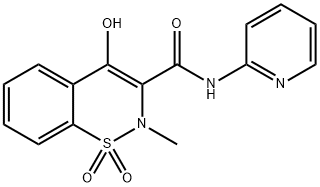

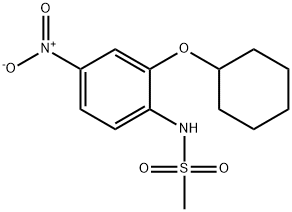

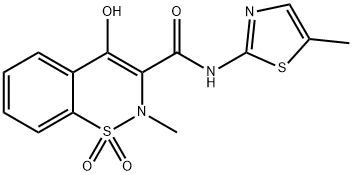
![4-[5-(4-CHLOROPHENYL)-3-(TRIFLUOROMETHYL)-1H-PYRAZOL-1-YL]BENZENESULFONAMIDE](https://img.chemicalbook.in/StructureFile/ChemBookStructure3/GIF/CB3243082.gif)
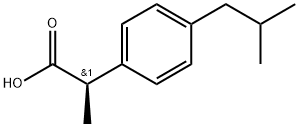
You may like
-
 SC-560 CAS 188817-13-2View Details
SC-560 CAS 188817-13-2View Details
188817-13-2 -
 SC-560 CAS 188817-13-2View Details
SC-560 CAS 188817-13-2View Details
188817-13-2 -
 1975-50-4 98%View Details
1975-50-4 98%View Details
1975-50-4 -
 2-HYDROXY BENZYL ALCOHOL 98%View Details
2-HYDROXY BENZYL ALCOHOL 98%View Details
90-01-7 -
 2-Chloro-1,3-Bis(Dimethylamino)Trimethinium Hexafluorophosphate 221615-75-4 98%View Details
2-Chloro-1,3-Bis(Dimethylamino)Trimethinium Hexafluorophosphate 221615-75-4 98%View Details
221615-75-4 -
 14714-50-2 (2-Hydroxyphenyl)acetonitrile 98+View Details
14714-50-2 (2-Hydroxyphenyl)acetonitrile 98+View Details
14714-50-2 -
 118753-70-1 98+View Details
118753-70-1 98+View Details
118753-70-1 -
 733039-20-8 5-broMo-2-chloro-N-cyclopentylpyriMidin-4-aMine 98+View Details
733039-20-8 5-broMo-2-chloro-N-cyclopentylpyriMidin-4-aMine 98+View Details
733039-20-8